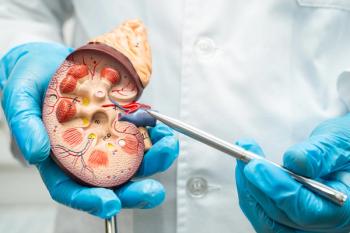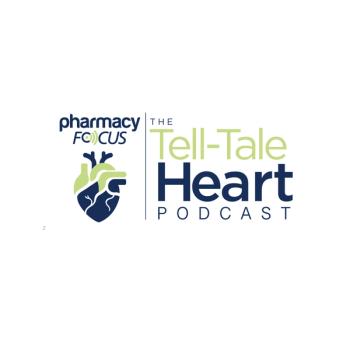
Pharmacy Practice in Focus: Health Systems
- January 2024
- Volume 13
- Issue 1
Surprising Drugs That Can Cause Serotonin Syndrome
Specific drugs, foods, and supplements can lead to this condition.
Serotonin syndrome usually occurs because of a combination of 2 or more serotonergic medicines. Although symptoms generally resolve with removal of the offending agents, if left unaddressed, serotonin syndrome can lead to severe complications such as rhabdomyolysis, metabolic acidosis, kidney failure, acute respiratory distress syndrome, coma, or death. With an estimated 7300 diagnoses of serotonin syndrome annually, there are approximately 100 deaths.1 Causative agents typically include monoamine oxidase inhibitors, selective serotonin reuptake inhibitors (SSRIs), serotonin and norepinephrine reuptake inhibitors (SNRIs), and tricyclic antidepressants. However, there are a few agents external to the usual list that the discerning clinician should be aware of. Most of these drugs have not been studied for their effects on serotonin, so there are only case reports for most of these drugs causing serotonin syndrome.
Stimulants
Amphetamines such as dextroamphetamine, methamphetamine, and amphetamine derivative phentermine cause serotonin syndrome by increasing the release and inhibiting the reuptake of serotonin, leading to an overall increase of serotonin levels. The stimulants dexmethylphenidate and methylphenidate are known to increase the release of serotonin when used concurrently with SSRIs or SNRIs, but the clinical significance of this is unclear, and data to evaluate the overall impact are lacking. However, a case report published in 2008 by Ishii et al described a patient who developed serotonin syndrome after methylphenidate was added to sertraline (Zoloft; Pfizer). Within 5 days, the patient began to experience symptoms consistent with serotonin syndrome, including profuse diaphoresis, muscle rigidity, hypertension, and increased heart rate. The methylphenidate was discontinued immediately, and all symptoms were resolved within 10 days.2
Pain and Muscle Relaxants
Analgesics and muscle relaxants are routinely used in combination. Although this combination of medications is usually safe when used appropriately, there are some agents whose serotonergic activity may warrant caution when used with another medication that also possesses serotonin activity. The opioids meperidine and methadone as well as the muscle relaxant cyclobenzaprine impair serotonin reuptake from the synaptic cleft into the presynaptic neuron. Fentanyl and metaxalone are direct serotonin receptor agonists. As one would expect, the risk of serotonin syndrome increases when 2 of these 3 opioids are used concurrently, and all these medications raise the risk of serotonin syndrome when used with other serotonergic medications.
A case report by Rang et al discussed serotonin toxicity in a 60-year-old woman on paroxetine for depression who received fentanyl for surgery-related analgesia.3 The patient developed symptoms suggestive of serotonin toxicity, including vague affectation, intermittent agitation, bilateral hyperreflexia, inducible clonus, and a period of hypertension. There was complete resolution of symptoms after cessation of both fentanyl and paroxetine.3
An article by Martini et al described 2 cases of serotonin syndrome with metaxalone when used in combination with an antidepressant.4 The first case involved a 29-year-old woman who was prescribed metaxalone, whereas the second involved a 27-year-old man who was taking metaxalone and escitalopram (Lexapro; Allergan). In both cases, metaxalone blood concentrations were at supratherapeutic levels. Both patients were intubated and received intravenous benzodiazepines for resolution of symptoms.4 Although these cases support the risk of serotonin syndrome with metaxalone, it remains uncertain whether the risk of serotonin toxicity requires supratherapeutic doses or whether it can still occur at doses recommended for current therapeutic uses. Until more information is available, it may be prudent to use an alternative muscle relaxer in a patient who is already taking drugs with serotonin activity, such as antidepressants.
Recreational Drugs
Other unexpected causes of serotonin syndrome are recreational drugs. Lysergic acid diethylamide (LSD) is one that can cause serotonin syndrome. The true mechanism of action of LSD with regard to how it causes serotonin syndrome is not fully understood. It is thought to be a partial agonist at the 5-HT2A and 5-HT2C receptors.5,6 Singh et al described a case of serotonin syndrome in a 28-year-old man following prolonged exposure to LSD. This patient survived after health care professionals recognized that the patient was experiencing serotonin syndrome; subsequently, they avoided using other serotonergic drugs in the patient’s symptom management, specifically fentanyl.7
Cocaine has been used medicinally and illicitly for centuries, but its propensity to cause serotonin syndrome is widely known. When used medicinally, cocaine has a topical route of administration that is not well absorbed systemically and therefore has minimal to no risk of serotonin syndrome. Although cocaine is well understood to exert its activity through action on α and β receptors, it also blocks monoamine reuptake transporters when ingested systemically, such as through inhalation or injection, thereby posing a risk of serotonin toxicity.8
A case report by Malik et al described a patient aged 20 years who was prescribed escitalopram, quetiapine, and clonazepam and presented with serotonin syndrome after taking cocaine. The patient survived due to the quick recognition of serotonin syndrome and the discontinuation of all serotonergic medications.9 Khan et al presented a case of a 37-year-old woman who developed serotonin syndrome after taking cocaine and then applying a fentanyl patch. The patient was also prescribed oxycodone/paracetamol, trazodone, and mirtazapine for other disease states. The patient required intubation and intensive care but was discharged. After the patient obtained clinical stability, her serotonergic home medications (eg, mirtazapine and trazodone) were resumed, suggesting that her serotonin toxicity was triggered by either the use of cocaine or fentanyl or their combination.10
Because fentanyl is also known to produce serotonin syndrome, it is difficult to determine whether a single agent or synergistic activity led to the patient’s symptoms. Because both articles describe serotonin syndrome with cocaine in patients on prescribed serotonergic drugs (with no previous issues of serotonin syndrome), it is important for clinicians to be mindful of the potential interaction.
The compound 3,4-methylenedioxymethamphetamine (MDMA) can cause serotonin syndrome by impairing serotonin reuptake from the synaptic cleft into the presynaptic neuron.11 There are 20 case reports of MDMA-induced serotonin syndrome, all occurring in individuals younger than 45 years who took antidepressants, amphetamines, stimulants, and/or opioids. Ten of the 20 patients were taking 1 or more antidepressant medications prior to MDMA use without complication, and symptoms of serotonin syndrome did not appear until MDMA use occurred. After MDMA discontinuation, the patients were able to resume antidepressant use without difficulty, which indicates that MDMA was a large contributing factor.12
Ayahuasca has monoamine oxidase–inhibiting harmala alkaloids in most of its formulations. As with the other illicit drugs, the risk of serotonin syndrome has primarily been described in patients who were already taking medications with serotonergic effects.13 Callaway et al described a 36-year-old man who had been taking fluoxetine (Prozac; Lilly) for several months for depression. After ingesting ayahuasca, he experienced tremors, sweating, shivering, and confusion that lasted for several hours and then resolved without treatment after the effects of the ayahuasca faded.14 This matches up with the pharmacokinetic profile for ayahuasca because it lasts up to 4 hours.15 Because ayahuasca is unlikely to appear on a drug toxicity screen, it is important for clinicians to fully ascertain every agent that a patient may have ingested rather than making the assumption that symptoms of serotonin syndrome were brought on by more traditional causes, such as the patient’s fluoxetine in this case.
Food and Supplements
Serotonin syndrome caused by food alone is highly unlikely because the active compounds would have to be ingested in high quantities to potentiate toxic serotonin activity. However, there are certain spices and supplements with serotonin activity that have the potential to be ingested in amounts sufficient to produce serotonin syndrome. There is also a small potential that one of these agents could result in serotonin syndrome through a preventable food-drug interaction with a patient’s regularly prescribed medications.
Nutmeg might be the most studied and well-known food to cause serotonin syndrome. Nutmeg has an antidepressant-like effect and has been known to affect the serotonin and adrenergic α1 receptors. However, it is unknown as to which specific serotonin receptors are involved.16
Curcumin is another offending agent. Although curcumin alone should be considered, it is also found in turmeric, a common spice in Asian cultures and a supplement with some popularity. Although there are no human studies or case reports of serotonin toxicity, curcumin has been shown to increase serotonin levels in mice; until more information is available, any potential risk of serotonin syndrome through this drug interaction can be mitigated by avoidance or cautious use of curcumin or turmeric in spice or supplement form in patients who are prescribed serotonergic drugs.17
Another dietary cause of serotonin syndrome comes from tryptophan-rich foods, which are the most common food group known to potentiate serotonin toxicity. Tryptophan directly increases serotonin production. Turkey is the most well-known food product containing tryptophan, but it can also be found in chicken, soy, eggs, pumpkin seeds, peanuts, and some cheeses.18 Because patients taking serotonergic medications routinely eat tryptophan-containing foods, it is unknown how much tryptophan would have to be ingested to produce a toxic effect or trigger a drug interaction. Avoidance may not always be necessary for patients on serotonergic medications; however, if a patient begins to develop symptoms of serotonin toxicity, evaluation of a rare and unlikely but not impossible interaction could be considered. Although there are no reports of tryptophan-containing foods causing serotonin syndrome, there is a case report that describes serotonin toxicity in a 28-year-old man due to tryptophan in supplement form, 5-hydroxytryptophan (5-HTP), when congested with sertraline.19 The supplement 5-HTP is a direct precursor of serotonin and is not regulated by a biochemical feedback mechanism. Therefore, it is possible to achieve high levels of serotonin with 5-HTP supplementation.19
Conclusion
Serotonin syndrome remains a rare but serious risk with many medications. Clinicians should be familiar with more likely causes that are dominated by antidepressants and other psychiatric medications. However, it is important to remember there are causative agents for serotonin syndrome other than the typical culprits. When serotonin syndrome is suspected but there is not an obvious cause, it would be valuable to consider some drugs, foods, and/or supplements. In patients who are at higher risk of serotonin syndrome, the risk may be mitigated through patient counseling, health care provider education, proactive reviews, and subsequent avoidance of serotonergic drug interactions whenever possible.
References
1. Spadaro A, Scott KR, Koyfman A, Long B. High risk and low prevalence diseases: serotonin syndrome. Am J Emerg Med. 2022;61:90-97. doi:10.1016/j.ajem.2022.08.030
2. Ishii M, Tatsuzawa Y, Yoshino A, Nomura S. Serotonin syndrome induced by augmentation of SSRI with methylphenidate. Psychiatry Clin Neurosci. 2008;62(2):246. doi:10.1111/j.1440-1819.2008.01767.x
3. Rang ST, Field J, Irving C. Serotonin toxicity caused by an interaction between fentanyl and paroxetine. Can J Anaesth. 2008;55(8):521-525. doi:10.1007/BF03016672
4. Martini DI, Nacca N, Haswell D, Cobb T, Hodgman M. Serotonin syndrome following metaxalone overdose and therapeutic use of a selective serotonin reuptake inhibitor. Clin Toxicol (Phila). 2015;53(3):185-187. doi:10.3109/15563650.2015.1009993
5. Hwang KAJ, Saadabadi A. Lysergic acid diethylamide (LSD). In: StatPearls. StatPearls Publishing; 2023. Accessed December 3, 2023. https://www.ncbi.nlm.nih.gov/books/NBK482407/
6. Fiorella D, Helsley S, Lorrain DS, Rabin RA, Winter JC. The role of the 5-HT2A and 5-HT2C receptors in the stimulus effects of hallucinogenic drugs: III: the mechanistic basis for supersensitivity to the LSD stimulus following serotonin depletion. Psychopharmacology (Berl). 1995;121(3):364-372. doi:10.1007/BF02246076
7. Patel DD, Galarneau D. Serotonin syndrome with fluoxetine: two case reports. Ochsner J. 2016;16(4):554-557.
8. Richards JR, Laurin EG. Cocaine. In: StatPearls. StatPearls Publishing; 2023. Accessed December 3, 2023. https://www.ncbi.nlm.nih.gov/books/NBK430769/
9. Malik HU, Kumar K. Serotonin syndrome with escitolapram and concomitant use of cocaine: a case report. Clin Med Insights Case Rep. 2012;5:81-85. doi:10.4137/CCRep.S9540
10. Khan A, Lahmar A, Asif H, Haseeb M, Rai K. Serotonin syndrome precipitated by the use of cocaine and fentanyl. Cureus. 2022;14(3):e22805. doi:10.7759/cureus.22805
11. Figurasin R, Maguire NJ. 3,4-methylenedioxy-methamphetamine toxicity. In: StatPearls. StatPearls Publishing; 2023. Accessed December 3, 2023. https://www.ncbi.nlm.nih.gov/books/NBK538482/
12. Makunts T, Jerome L, Abagyan R, de Boer A. Reported cases of serotonin syndrome in MDMA users in FAERS database. Front Psychiatry. 2022;12:824288. doi:10.3389/fpsyt.2021.824288
13. Ruffell S, Netzband N, Bird C, Young AH, Juruena MF. The pharmacological interaction of compounds in ayahuasca: a systematic review. Braz J Psychiatry. 2020;42(6):646-656. doi:10.1590/1516-4446-2020-0884
14. Callaway JC, Grob CS. Ayahuasca preparations and serotonin reuptake inhibitors: a potential combination for severe adverse interactions. J Psychoactive Drugs. 1998;30(4):367-369. doi:10.10 80/02791072.1998.10399712
15. Greene SL. Chapter18 - tryptamines. In: Dargan P, Wood D, eds. Novel Psychoactive Substances. 2nd ed. Academic Press; 2022:495-532. doi:10.1016/B978-0-12-818788-3.00014-0
16. Dhingra D, Sharma A. Antidepressant-like activity of n-hexane extract of nutmeg (Myristica fragrans) seeds in mice. J Med Food. 2006;9(1):84-89. doi:10.1089/jmf.2006.9.84
17. Jenkins TA, Nguyen JCD, Polglaze KE, Bertrand PP. Influence of tryptophan and serotonin on mood and cognition with a possible role of the gut-brain axis. Nutrients. 2016;8(1):56. doi:10.3390/nu8010056
18. Ng QX, Koh SSH, Chan HW, Ho CYX. Clinical use of curcumin in depression: a meta-analysis. J Am Med Dir Assoc. 2017;18(6):503-508. doi:10.1016/j.jamda.2016.12.071
19. Patel YA, Marzella N. Dietary supplement-drug interaction-induced serotonin syndrome progressing to acute compartment syndrome. Am J Case Rep. 2017;18:926-930. doi:10.12659/ajcr.904375
About the Authors
Emory Heffernan, Austin Triplett, and Andrew Stewart are PharmD candidates in the class of 2024 at Auburn University Harrison College of Pharmacy in Alabama.
Marilyn N. Bulloch, PharmD, BCPS, FCCM, SPP, is an associate clinical professor and director of strategic operations at Auburn University Harrison College of Pharmacy in Alabama.
Articles in this issue
almost 2 years ago
Give Your Patients Options for Managing Menstrual Painalmost 2 years ago
Managing Recurrent C difficile Infections: Past, Present, and Futurealmost 2 years ago
RSV Vaccines See a Pricey Leap Forward in Disease Preventionalmost 2 years ago
Implementing USP <800> Guidelines in Pediatric Hospitalsalmost 2 years ago
Gene Therapies Hold Promise for Neuromuscular and Other Rare Diseasesalmost 2 years ago
Introducing Peer Review to Pharmacy Practice in Focus: Health SystemsNewsletter
Stay informed on drug updates, treatment guidelines, and pharmacy practice trends—subscribe to Pharmacy Times for weekly clinical insights.


















































































































































































































